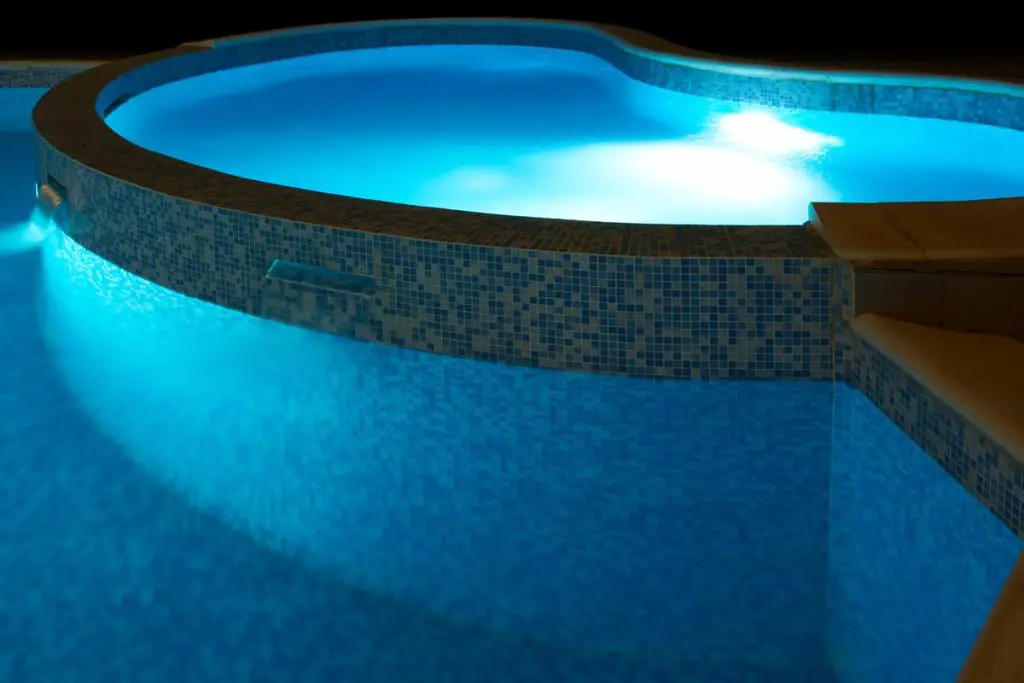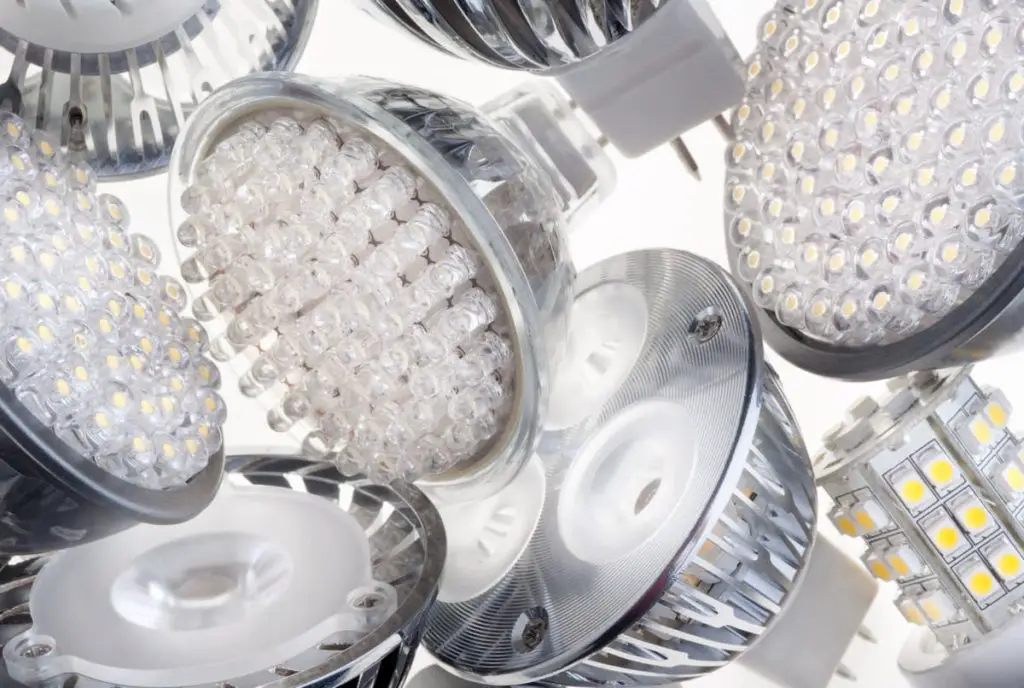Maintaining a home swimming pool can be expensive. The costs of cleaning, filling the pool with water, balancing the chemicals, and running the pool pump can add up quickly. Another additional expense is lighting the pool for use after dark, though you can lessen it by using LED pool lights.
An LED pool light costs up to 0.44 cents a day to run, assuming a maximum consumption of 42 watts per hour and an average electricity rate of 10.42 cents per kilowatt-hour. This cost is significantly less expensive than using incandescent pool lights, which can cost up to $1 per day.
The rest of this article will expand on the costs of LED lights relative to incandescent lights. I’ll also cover the economic costs of LED lights, how much control you have over these lights, and how much incandescent pool lights cost in comparison.

How Much Do LED Pool Lights Cost To Run?
LED stands for “light-emitting diode.” LED lights work by passing electricity through a tiny semiconductor (the diode) that emits photons. These photons come in the form of visible light when an LED light is turned on for your poolside party or event.
Each LED pool light costs less than 0.44 cents a day to run. LED lights operate at a lower wattage than incandescent lights, with some bulbs needing as little as 42 watts. This means they require less energy to run and also generate less heat.
Also, LED lights don’t have to rely on bulky heat sinks to keep cool. Instead, they only need tiny heat sinks to dispel any heat generated, which is usually not significant.
Finally, the low heat works better for the rubber gaskets that keep the LED lights safe and functional underwater. Lights that produce more heat, like incandescent bulbs, often cause the rubber gasket to deteriorate more quickly, meaning you have to replace them more frequently.
How Much Do LED Pool Lights Cost To Replace?
LED pool lights cost between $50 and $650 to replace, depending on the size and type of bulb. An LED pool light can last for 15 to 20 years, assuming it’s not operating 24/7. Like any light bulb, an LED pool light will eventually dim and burn out completely.
Although LED light bulbs were expensive when they first became available on the market, their costs have continued to decline as they’ve become more common, manufacturing techniques have improved, and consumers have become more conscious about the impact of their purchases on the environment.
When replacing an LED light in your pool, always check the manufacturer’s information regarding the size of the light and its fixture before making a purchase. You can buy LED pool lights from your local swimming pool supply company or online.
One popular LED pool light is the Morsen 120V 45W LED Pool Light (available on Amazon.com). This light comes with extra LED beads to create brighter and more vibrant lighting than other models. You can also make your favorite color combinations, as well as change the colors and brightness using the included remote control.
What Are Economic Benefits of Using LED Pool Lights?
LED lights can have up to 50,000 hours of run time, whereas incandescent bulbs only last about 2,000 hours and fluorescent bulbs only 15,000 hours. This longer run time means LED bulbs last longer and don’t need to be replaced as frequently.
Although LED lights can be more expensive upon purchase, their longer run time compared to traditional incandescent or fluorescent light bulbs translates to lower costs over the long run.
When an LED pool light nears the end of its life, its emitted light becomes weaker and weaker until the light goes out entirely. This means pool owners get a heads-up for when they should start looking for replacement lights. In contrast, an incandescent bulb will only alert you that you need replacement when it’s no longer able to light up.
Do You Have More Control When Using LED Pool Lights?
You have more control when using LED pool lights, especially with regards to the colors of light emitted and the brightness of each light. You can choose lights that only come in one color or multiple colors. You can also dim and brighten them based on your preferences.
Many LED pool lights can be controlled by a remote or smartphone app. This makes it easy to change the colors in your pool without leaving the comfort of your poolside chair.
Take the Qoolife Rechargeable Magnetic Submersible LED Lights (available on Amazon.com), for example. Even if there’s a wall between your remote and the lights, you can still operate them without too much trouble. Also, the lights are rechargeable, waterproof, and come with 11 lighting patterns that can go with any event or occasion.
Speaking of which, many pool owners change the colors of their pool lights to match a theme, especially if they’re hosting an event. For example, for a Fourth of July or Independence Day pool party, you can set the lights to red, white, and blue to create a festive atmosphere.
To learn more about some of the ways you can control your LED lights and create a fun atmosphere, check out this YouTube video from Swim University:
https://www.youtube.com/watch?v=4Pi-oH1xS5o
How Much Do Incandescent Pool Lights Cost To Run?
A single incandescent pool light can cost up to $1 per day to run. This can amount to $5 to $10 per day for a swimming pool with multiple lights. Incandescent bulbs operate at a much higher wattage than LED lights, requiring more electricity.

Final Thoughts
LED lights are much less expensive to run than traditional incandescent lights. LED pool lights can run for just pennies a day per bulb in a home swimming pool. In contrast, incandescent pool lights can cost up to $1 per day for each bulb. LED pool lights are an excellent investment that will give you pool great lighting at a low price.
Sources
- Lamps Plus: How an LED Light Bulb Works
- Swim University: 7 Reasons You Need LED Pool Lights
- River Pools: Inground Pool Light Cost & Other Common Lighting Questions
- SwimHappy: 5 Reasons to Install LED Pool Lighting
- YouTube: Swim University – 5 Reasons You Need Pool LED Lighting
- Let’s Save Electricity: Led Light Power Consumption Calculator
- Energybot: Electricity Rates by State
